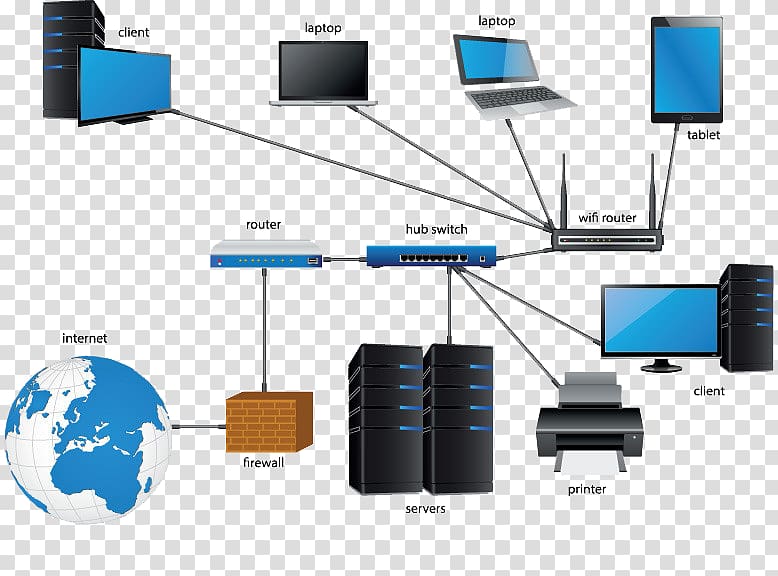Wireless Lan Controller: Benefits of using a wireless lan controller.
A Wireless LAN Controller (WLC) is a device that is used to manage and control wireless access points (APs) in a wireless local area network (WLAN). The WLC is typically deployed in a central location and is responsible for managing multiple APs across an entire network.

The WLC provides a number of important functions, including:
- Centralized management of wireless access points: The WLC allows network administrators to manage all of the APs in their network from a central location. This makes it easy to configure, monitor, and troubleshoot wireless devices across the network.
- Security: The WLC provides a number of security features, such as encryption, authentication, and access control, to ensure that only authorized users are able to access the network.
- Load balancing: The WLC is able to distribute the load among different access points to ensure that no single AP is overloaded and causing network performance issues.
- Roaming: The WLC is responsible for handling the seamless handoff of wireless clients between different APs as they move around the network.
Overall, a WLC can greatly simplify the management of a wireless network by providing centralized control and security features, while also improving network performance and reliability.
Wireless Lan Controller: How does wireless lan work.
There are several benefits of using a wireless LAN controller (WLC) in a wireless network, including:
- Centralized Management: One of the key benefits of a WLC is that it provides centralized management of all the wireless access points (APs) in the network. This makes it easier for network administrators to configure and manage the network as a whole, rather than having to configure and manage individual APs.
- Enhanced Security: A WLC can provide enhanced security features such as authentication, encryption, and access control, which help to protect the network from unauthorized access.
- Improved Performance: A WLC can help to improve network performance by providing load balancing and traffic optimization features, which ensure that traffic is evenly distributed across APs and that the network is able to handle heavy usage.
- Easy Roaming: A WLC can also help to facilitate seamless roaming between APs, allowing wireless clients to move around the network without experiencing any interruptions in connectivity.
- Scalability: A WLC can easily support a large number of APs, making it a highly scalable solution for enterprise wireless networks.
- Streamlined Troubleshooting: With a WLC, network administrators can quickly identify and troubleshoot issues with the wireless network, since all of the APs are managed from a centralized location.
Overall, a WLC can help to simplify the management of a wireless network while also providing enhanced security, improved performance, and streamlined troubleshooting capabilities.
Wireless Lan Controller: Why wireless lan controller is needed.
Wireless LAN (WLAN) is a type of local area network that uses radio waves instead of physical cables to connect devices within a limited area, such as a building or campus. Here’s how it works:
- Access Points (APs): An access point is a wireless networking device that allows wireless devices to connect to a wired network. APs transmit and receive data to and from wireless devices, acting as a bridge between wireless and wired networks.
- Wireless Devices: Wireless devices, such as laptops, smartphones, and tablets, have built-in wireless network adapters that allow them to connect to an access point.
- Radio Waves: Access points use radio waves to transmit and receive data. These radio waves are part of the electromagnetic spectrum and have a frequency that is measured in Hertz (Hz). WLAN typically uses frequencies in the range of 2.4 GHz or 5 GHz.
- SSIDs: Service Set Identifiers (SSIDs) are unique identifiers assigned to each WLAN. The SSID is used to identify the network and ensure that wireless devices are connecting to the correct WLAN.
- Authentication and Encryption: WLANs use authentication and encryption protocols to ensure that only authorized users are able to access the network and that data transmitted over the network is secure.
- Roaming: WLANs support roaming, which allows wireless devices to maintain a connection to the network while moving between different access points. Roaming is facilitated by the use of wireless signals that are transmitted between access points.
Overall, WLANs use radio waves to enable wireless connectivity between devices within a limited area. Access points act as a bridge between the wireless and wired networks, and authentication and encryption protocols are used to ensure security.
Read More..

2 thoughts on “Wireless Lan Controller | Why Wireless LAN Controller is needed”
Comments are closed.